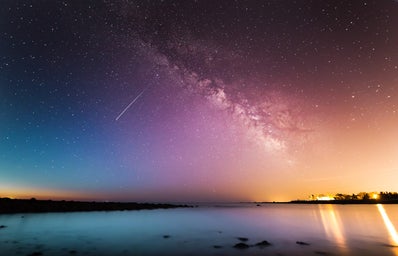Aurora borealis, also known as the northern lights, is a natural phenomenon that makes the sky light up in various shades of green, red, pink, and purple. This mesmerizing display is caused by particles from the sun colliding with Earth’s atmosphere, creating a dazzling and unforgettable light show in the process.
The northern lights can be seen in the polar regions, particularly in Iceland, Norway, Sweden, and Finland, as well as in Canada and Alaska, and sometimes, in the midwestern region of the United States. The best time to witness the northern lights is during the winter months.
The science behind this natural phenomenon is intriguing. When particles from the sun enter Earth’s atmosphere, they collide with gas particles, causing the release of energy in the form of light. Essentially, the Earth’s magnetic field nudges charged particles towards the poles.
The shape of the magnetic field creates two gigantic ovals over the north and south magnetic poles, and we see the lights. The color of the light depends on the type of gas particles that the solar particles collide with. For instance, green light is produced when solar particles collide with oxygen molecules, while purple light is produced when they collide with nitrogen molecules.
The northern lights have become a major tourist attraction in areas where they are visible, such as Norway, Sweden, Finland, and Iceland. Visitors from all over the world come to witness this phenomenon, often going on guided tours to remote areas where they can enjoy the colorful display in all its glory.
The aurora borealis has captivated people for centuries. From both a scientific and a cultural point of view, they continue to be a beautiful and awe-inspiring sight that draws people from all over the globe.


